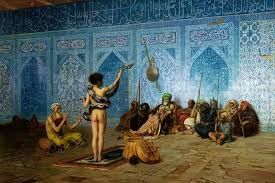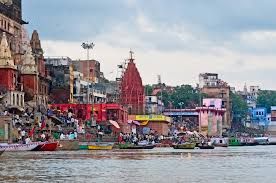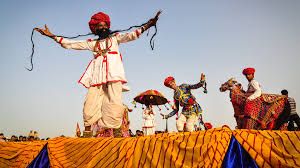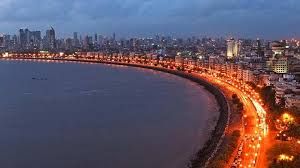How The West Sees Us- Why The Occident Gaze Matters So Much For Us Asians And How Can We Overcome It?
May 22, 2019 • 25 views
How the West sees us- why the Occident gaze matters so much for us Asians and how can we overcome it?
by Yuktah. 22 May 2019

Orientalism can be broadly understood as the Western tradition of style and thought of looking, understanding and representing the East to their audience. This representation of the East is done through various symbols of language, art, music, architecture and also photography which naturalizes a wide range of assumptions and stereotypes drawn by the West.
Orient, thus becomes everything ‘lack of’ and oriental spaces become spaces of blunders or inferiority which only highlights the superiority of the Occident.We know that “Power creates knowledge”. History is also written by those in power. Thus, many orientalist texts represent Imperialistic approach of the West as natural and necessary in order to “civilize” the Other who are presented and assumed in a very barbaric, illiterate and a ‘not good enough’ sight. The “need” to “civilize” the natives or people of colour can be associated to the concept of ‘White Man’s burden’ which justifies this imperialisticbehaviour by claiming that it is their responsibility as superior races to uplift, civilize and Christianize native people. The natives themselves were made to believe in these stereotypes created about them by the West. It was very unfair and unfortunate in the sense that it ended up creating a very inferior image of the East in the minds of the Westerners.
Even today, we see how countries of Asia are narrowed down to a very one sided and extremely stereotyped notions and images. Words like exotic, mysterious and unknown, magical, etc are often used while describing these lands and the natives of the place.
Today, I believe, more than texts or even architecture, it is the visual representation through movies, music videos, art, photographs and social media platforms like Instagram and Pinterest (which were basically made for sharing pictures) that how the other side of the world sees us, which is mostly still the same.
Talking of visual representation, I’d like to mention the work Photography’s Orientalism: New essays on Colonial representation, edited by Ali Behdad and Luke Gartlan., in the preface of which the author says that Photography has been the key to evolution and maintenance of the Europe’s distinctive vision of the East. In the world of photography, there exists a term called “photo-exoticism” which is a mode of representation of a group or community in a very certain manner which eventually leads to formation of particular images or notions about that community in the minds of others.

If we simply search for the images of India on search engines like google or these social media sites like Pinterest, which are made solely for sharing pictures, we will majorly find beautiful deserts of Rajasthan with women of various tribes in their colourful clothing, or the famous Ganga ghats, the pictures of festival of Holi or Diwali, mud houses in the villages with several women with water pitcher on their heads or even cows, horses and donkeys sharing spaces with cars and motorbikes on the roads. Such images thus, become marking features for the West to define us. And they term such traits as ‘exotic’.
No doubt, such things do exist in our country or such landscapes or images are a reality, but this is not it. There also exists the other side of the picture, another image. Through such portrayals, certain few notions about a society are made to become their defining marker so prominently that to the other side, the breakage of such stereotypes comes off as a big surprise. And such constant and long continued portrayal of the Eastern societies has only led to the strengthening of these stereotypes which has eventually led the West to believe in their status as the ultimate superiors.


While we are talking of how few images end up creating a certain notion or assumptions, I’d like to share a real-life experience which I went through in the summer of 2016. I had gone to study in London. One day while playing rapid fire game of sorts where upon being given the name of any country, the person had to speak whatever comes to their mind first, with my classmates which had people from countries like Russia, USA, UK, Italy and Spain; when India was spoken I heard many responses like “Poverty”, “Colony”, “Snake Charmers”, “Exotic Music”, “Child Marriage”, “Taj Mahal”, “Cows on streets”, “Villages and mud houses”. I think someone even said “Slumdog millionaire”. Such responses shocked me and saddened me a lot, as I felt belittled in a way that ‘is this what people think of my country? Or is this how Indian society is being seen or portrayed as?’ Angered, I stood up with a feel of needing to shut them all up, I typed in for the images of Mumbai- the marine drive road, the beautiful city of Chandigarh and of course New Delhi. To many, these tall buildings or the large-scale industries came off as a big surprise. The 17-year-old me, brushed it off as a case of extreme stereotyping and soon forgot about it. But now, knowing and studying about this concept of Orientalism in my university in depth and how it has tarnished the image of not only my country but the East in a very stereotypical way that no matter how much “civilized” we become or how much progress we have made, we will still be seen as inferior and the West as superior. It also made me realise that even if we are evolving and have progressed so much, due to us being portrayed in a certain way since so long, it will surely take a lot of time, patience and awareness to change such assumptions.

And the reason I am talking about it is majorly because of how I could relate to Chimamanda Ngozi Adichie’s The danger of a single story and her eye opening and enlightening TED talk on the same issue. How we through multiple texts have been shown as only the people belonging to the land of snake charmers, exotic landscapes, black magic, thin impoverished children, orthodox traditions and superstitions. I wouldn’t deny the existence of such elements in our society, but this is not the only defining features.
No doubt, many of these stereotypes are now breaking and people have started looking at us beyond these notions, but years of such typifying still somewhat becomes an obstacle and it will take a long time for us all to break such notions and I believe that this would only happen once we begin to stop considering ourselves as inferior, or stop considering the West as the centre- the ultimate degree of reference to compare anything or look up to.
Work reference
1.Photography’s Orientalism: New essays on Colonial representation, edited by Ali Behdad and Luke Gartlan. Getty Publications, Los Angeles, 2013
